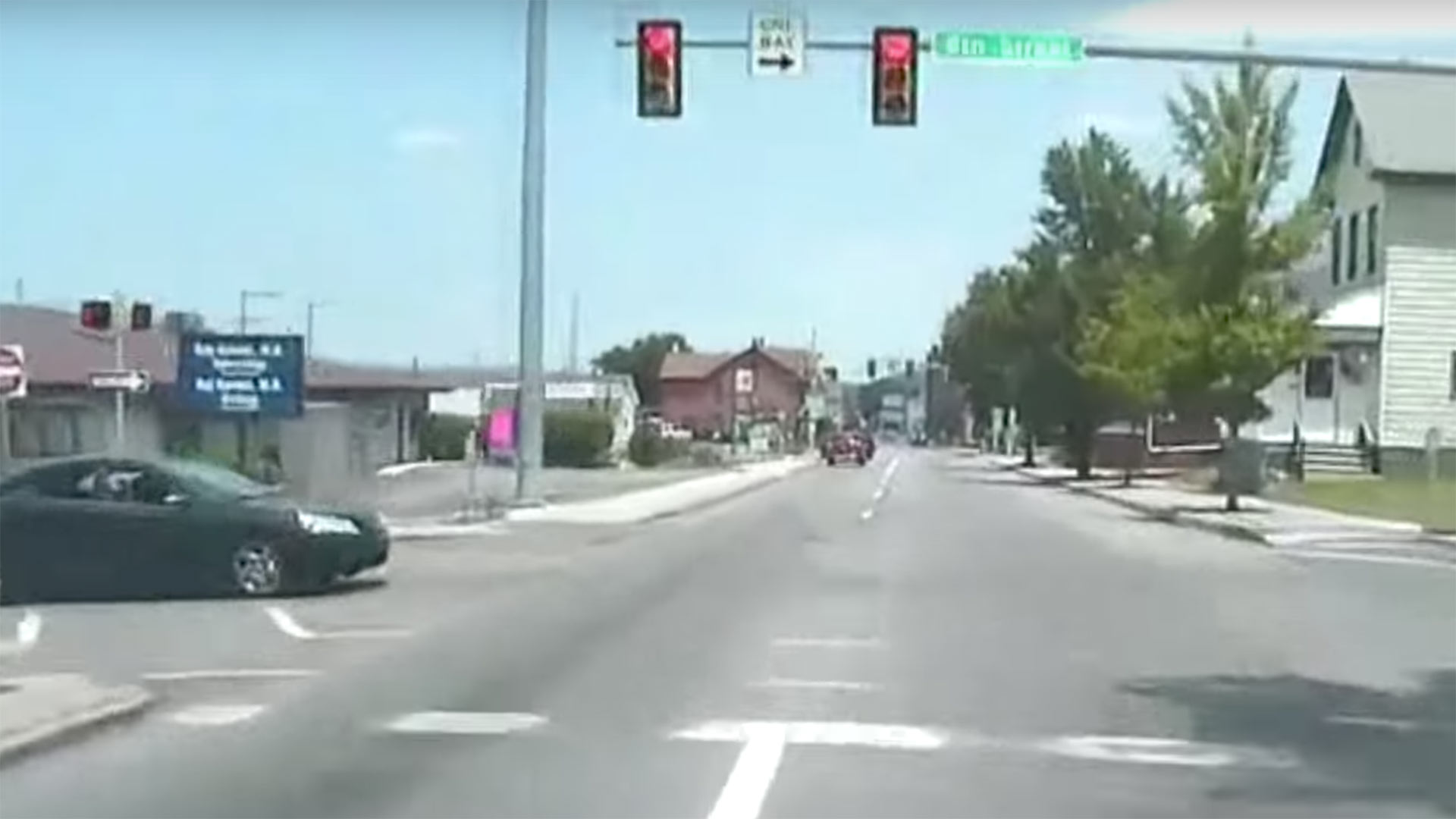

It doesn’t matter whether you are driving an ambulance, fire truck, or police car—there are certain precautions you need to take while responding lights and sirens. Although the magic lights and sirens grant the responding party certain privileges—going through red lights and forcing people to pull over when necessary—they do not make you immune.
As you can see in the video below, an Altoona Police Department cruiser was responding to an emergency at a high rate of speed. After making the first right turn, the officer continued at a high rate of speed with mild car traffic and some pedestrian traffic. The officer then approached a red light, applied the brakes, and continued through, still traveling at a brisk pace. As a result, a Saturn T-boned the cruiser causing it to flip and spin. Fortunately, both parties only suffered minor injuries as a result of the accident, according to the video’s description.
Let’s make something very clear, the goal of responding to an incident is to “arrive alive.” Regardless of where you took your EVOC course, the same practices are encouraged. You are not helping the 911 call if you don’t make it to the scene or happen to hurt someone while responding. When traveling through an intersection displaying a red light or stop sign in your direction of travel, you are supposed to come to a complete stop before proceeding through. Even though this adds a few seconds to your response time, it ensures the safety of all parties involved.
Unfortunately, adrenaline can get the best of first responders sometimes and incidents like this happen. Just remember to take a deep breath before you begin your response and always remember your objective, arrive alive.
